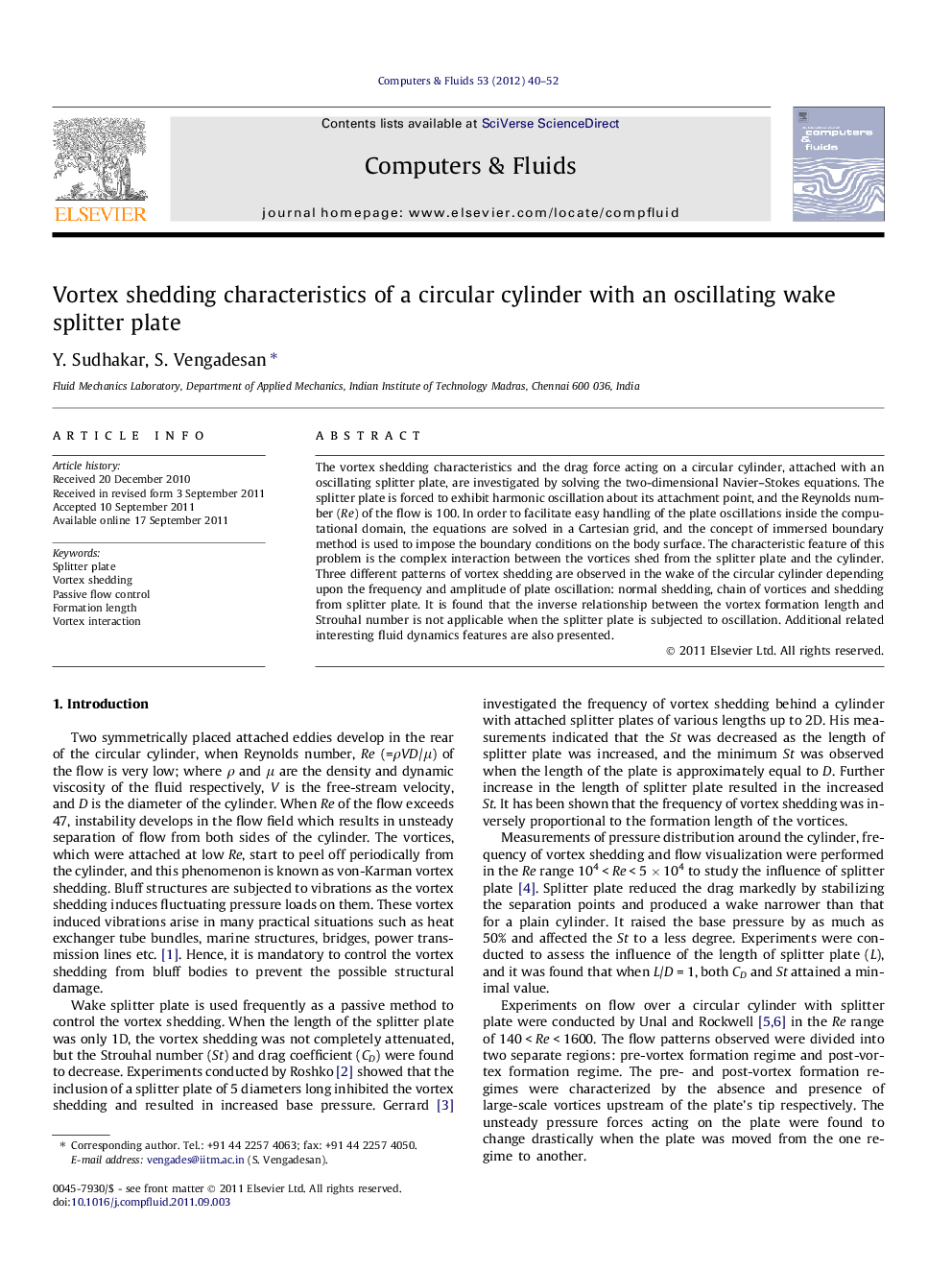| Article ID | Journal | Published Year | Pages | File Type |
|---|---|---|---|---|
| 762610 | Computers & Fluids | 2012 | 13 Pages |
The vortex shedding characteristics and the drag force acting on a circular cylinder, attached with an oscillating splitter plate, are investigated by solving the two-dimensional Navier–Stokes equations. The splitter plate is forced to exhibit harmonic oscillation about its attachment point, and the Reynolds number (Re) of the flow is 100. In order to facilitate easy handling of the plate oscillations inside the computational domain, the equations are solved in a Cartesian grid, and the concept of immersed boundary method is used to impose the boundary conditions on the body surface. The characteristic feature of this problem is the complex interaction between the vortices shed from the splitter plate and the cylinder. Three different patterns of vortex shedding are observed in the wake of the circular cylinder depending upon the frequency and amplitude of plate oscillation: normal shedding, chain of vortices and shedding from splitter plate. It is found that the inverse relationship between the vortex formation length and Strouhal number is not applicable when the splitter plate is subjected to oscillation. Additional related interesting fluid dynamics features are also presented.
► Three shedding patterns: normal shedding, chain of vortices and shedding from plate. ► To completely suppress shedding oscillating plate can be much shorter than fixed one. ► Inverse relationship between vortex formation length and St is not applicable. ► Drag coefficient is less than that of fixed plate configuration. ► Use of immersed boundary method to model plate oscillations in fixed Cartesian grid.
